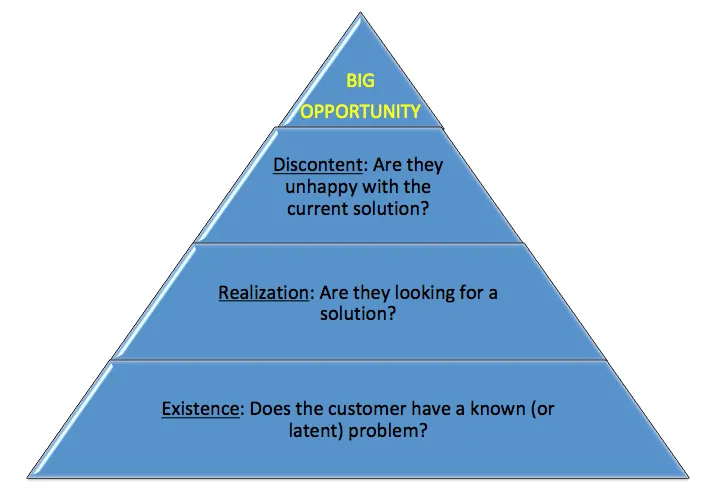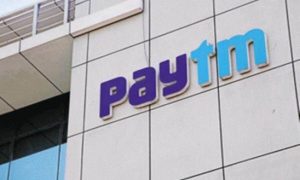They studied a lot of factors, including: team, market, idea, timing, business model, investors/funding, and more.
And, the numero uno parameter that determines a startup’s success – timing!
Yes, you’ve probably heard, in many a context, its all about the timing – in sports like tennis, cricket; in performing arts like theatre, music, standup comedy; in investing into assets like startups, public markets, real estate and more.
But timing, in startups?
Even if it is true, how is one supposed to “plan” for timing?
I admit it is hard but you can improve the odds. Hint: start with a deep understanding of the customer. We have seen hundreds if not thousands of startups over the years.
We have noticed that entrepreneurs spend a lot of time on thinking about the idea, product, and even the business.
However, they don’t spend enough time thinking about the customer and both their “readiness” to solve this problem and how much it will move their needle in their business or personal lives.
We have been using a simple framework (See image below) to help with this and are hopeful it will help startups as well.

Step 1: Identification
It starts with identification if the customer has a “real” problem. Is it a problem worth solving? Note, at this stage, it does not say anything about how “meaningful” solving this problem is or how important it is for them vis-à-vis other problems they are facing. It just states that this is a real problem.
You may be thinking that this “framework” will not apply to new, breakthrough products for which there is no precedent – e.g. iPods, iPhone, AirBnb rooms, Segway Scooters, Mosaic Browser, Gmail, and more. However, those classes of problems will still have proxies for user pain or user demand; alternatively, you may have a 10X technology breakthrough that could trigger an innovation.
It behooves the entrepreneur to ensure they are attempting a problem worth solving.
Step 2: Realisation
It is a real problem, perhaps even a meaningful one, but does the customer realise he has a problem. Let me illustrate with an example. Lets say you are working on an “anti-counterfeiting” protection solution for FMCG food products. Do the consumers realise they have a problem with their “branded” noodles or their hot chocolate? While, no customer will say he want a counterfeit or otherwise defective product, how aware is the customer that this is a real problem? Even if he does realise that it’s a problem, how important is this problem for him to solve?
There are a “large” set of problems which fall in this category of “nice to have” problems. In investor-speak, it is often called the “Vitamin” vs the “Pain Killer” problem.
Solving for “Pain” determines the “urgency” and the “impact” of the problem. This is particularly important for an early stage startup. For most startups, you will not have the time, energy, or capital, to solve a problem that is neither urgent nor important to the customer.
Step 3: Discontent
One of the better places to start solving a problem is where a customer has a problem, has realised that it has it and has already attempted to solve it by some means; it could be using an a different product, or a “jugaad” (makeshift) solution, or by making some process improvements or whatever else. This is the missing step.
Let us take an example. Let’s say you are solving for fraud at currency exchanges. The customer is using various physical machines to verify the validity and accuracy of the cash that has been tendered for exchange. For the sake of discussion, lets say it is 99.999 percent accurate. You now need to answer two questions:
1. Is the customer unhappy or unsatisfied in some way with the present solution?
The customer may be dissatisfied on a variety of factors. It may be that the “throughput” of the currency bills verified is not good enough; or, that the number of different currencies is not supported or that, the odd crumpled bill “jams” the process. You get the idea. You need to look for that “chink” in the armor.
2. Do you have a 10X solution? Is your solution 1000 percent better than the current state of the art? Not 20 percent better, nor 30 percent cheaper, but 1000 percent percent better?
It could be 10X+ on accuracy, volume, cost, or whatever dimension. The reason this matters enormously for an early stage startup, is that you want to make rapid, quick inroads into customers’ adopting your solution. You don’t want to be stuck in “me too” solutions or a “feature matrix” comparison or an endless pursuit of free or paid pilots where the customer is doing “research” through you.
Keep refining your customer, problem, and solution together till you have a “compelling” concept.
Opportunity
Once your problem satisfies existence, realisation, and discontent, you have a problem that is both important and timely; and a solution that’s 10X better. That will lead to organic demand. It will lead to referrals.
You have a problem worth solving. I will write a subsequent post on what are some other hurdles you need to jump to evaluate if the “prize” is worth winning – that will include market size, business model viability, team, and other attributes.
Identifying and validating an early startup idea is hard; it behooves you to have some wind behind your back.
For more updates: Like us on Facebook and follow us on Twitter & Instagram.





































